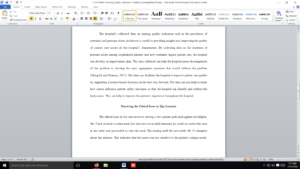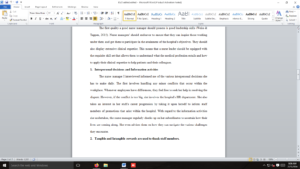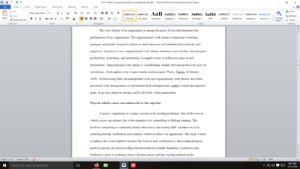National initiatives driven by the American Nurses Association have determined nursing-quality outcome indicators that are intended to focus plans and programs to increase quality and safety in patient care. The following outcomes are commonly used nursing-quality indicators:
• complications such as urinary tract infections, pressure ulcers, hospital-acquired pneumonia, and DVT
• patient falls
• surgical patient complications, including infection, pulmonary failure, and metabolic derangement
• length of patient hospital stay
• restraint prevalence
• incidence of failure to rescue, which could potentially result in increased morbidity or mortality
• patient satisfaction
• nurse satisfaction and staffing
SCENARIO
Mr. J is a 72-year-old retired rabbi with a diagnosis of mild dementia. He was admitted for treatment of a fractured right hip after falling in his home. He has received pain medication and is drowsy, but he answers simple questions appropriately.
A week after Mr. J was admitted to the hospital, his daughter, who lives eight hours away, came to visit. She found him restrained in bed. While Mr. J was slightly sleepy, he recognized his daughter and was able to ask her to remove the restraints so he could be helped to the bathroom. His daughter went to get a certified nursing assistant (CNA) to remove the restraints and help her father to the bathroom. When the CNA was in the process of helping Mr. J sit up in bed, his daughter noticed a red, depressed area over Mr. J’s lower spine, similar to a severe sunburn. She reported the incident to the CNA who replied, “Oh, that is not anything to worry about. It will go away as soon as he gets up.” The CNA helped Mr. J to the bathroom and then returned him to bed where she had him lie on his back so she could reapply the restraints.
The diet order for Mr. J was “regular, kosher, chopped meat.” The day after his daughter arrived, Mr. J was alone in his room when his meal tray was delivered. The nurse entered the room 30 minutes later and observed that Mr. J had eaten approximately 75% of the meal. The meal served was labeled, “regular, chopped meat.” The tray contained the remains of a chopped pork cutlet.
The nurse notified the supervisor, who said, “Just keep it quiet. It will be okay.” The nursing supervisor then notified the kitchen supervisor of the error. The kitchen supervisor told the staff on duty what had happened.
When the patient’s daughter visited later that night, she was not told of the incident.
The next night, the daughter was present at suppertime when the tray was delivered by a dietary worker. The worker said to the patient’s daughter, “I’m so sorry about the pork cutlet last night.” The daughter asked what had happened and was told that there had been “a mix up in the order.” The daughter then asked the nurse about the incident. The nurse, while confirming the incident, told the daughter, “Half a pork cutlet never killed anyone.”
The daughter then called the physician, who called the hospital administrator. The physician, who is also Jewish, told the administrator that he has had several complaints over the past six months from his hospitalized Jewish patients who felt that their dietary requests were not taken seriously by the hospital employees.
The hospital is a 65-bed rural hospital in a town of few Jewish residents. The town’s few Jewish members usually receive care from a Jewish hospital 20 miles away in a larger city.
REQUIREMENTS
Your submission must be your original work. No more than a combined total of 30% of the submission and no more than a 10% match to any one individual source can be directly quoted or closely paraphrased from sources, even if cited correctly. An originality report is provided when you submit your task that can be used as a guide.
You must use the rubric to direct the creation of your submission because it provides detailed criteria that will be used to evaluate your work. Each requirement below may be evaluated by more than one rubric aspect. The rubric aspect titles may contain hyperlinks to relevant portions of the course.
Analyze the scenario (suggested length of 2–3 pages) by doing the following:
A. Discuss how the application of nursing-quality indicators could assist the nurses in this case in identifying issues that may interfere with patient care.
B. Analyze how hospital data of specific nursing-quality indicators (such as incidence of pressure ulcers and prevalence of restraints) could advance quality patient care throughout the hospital.
C. Analyze the specific system resources, referrals, or colleagues that you, as the nursing shift supervisor, could use to resolve an ethical issue in this scenario.
D. Acknowledge sources, using in-text citations and references, for content that is quoted, paraphrased, or summarized.
E. Demonstrate professional communication in the content and presentation of your submission.
RUBRIC
A:UNDERSTANDING OF NURSING QUALITY INDICATORS
| NOT EVIDENT
A discussion of applying nursing-quality indicators is not provided. |
APPROACHING COMPETENCE
The discussion does not logically address how the application of nursing-quality indicators could assist the nurses in the scenario with identification of issues that may interfere with patient care. |
COMPETENT
The discussion logically addresses how the application of nursing-quality indicators could assist the nurses in the scenario with identification of issues that may interfere with patient care. |
B:ADVANCING QUALITY PATIENT CARE
| NOT EVIDENT
An analysis of potential advancement(s) to patient care is not provided. |
APPROACHING COMPETENCE
The analysis does not identify specific nursing-quality indicators from the scenario or does not logically discuss how hospital data on the identified indicators could advance quality patient care throughout the hospital. |
COMPETENT
The analysis identifies specific nursing-quality indicators from the scenario and logically discusses how hospital data on the identified indicators could advance quality patient care throughout the hospital. |
C:RESOLUTION OF ETHICAL ISSUES
| NOT EVIDENT
An analysis of the use of system resources, referrals, or colleague for resolving ethical issues is not provided. |
APPROACHING COMPETENCE
The analysis describes one or more system resources, referrals, and/or colleagues that are inappropriate for the candidate to use in the role of nursing shift supervisor to resolve the ethical issue from the scenario. |
COMPETENT
The analysis describes specific system resources, referrals, or colleagues that are appropriate for the candidate to use in the role of the nursing shift supervisor to resolve the ethical issue from the scenario. |
D:SOURCES
| NOT EVIDENT
The submission does not include both in-text citations and a reference list for sources that are quoted, paraphrased, or summarized. |
APPROACHING COMPETENCE
The submission includes in-text citations for sources that are quoted, paraphrased, or summarized and a reference list; however, the citations or reference list is incomplete or inaccurate. |
COMPETENT
The submission includes in-text citations for sources that are properly quoted, paraphrased, or summarized and a reference list that accurately identifies the author, date, title, and source location as available. |
E:PROFESSIONAL COMMUNICATION
| NOT EVIDENT
Content is unstructured, is disjointed, or contains pervasive errors in mechanics, usage, or grammar. Vocabulary or tone is unprofessional or distracts from the topic. |
APPROACHING COMPETENCE
Content is poorly organized, is difficult to follow, or contains errors in mechanics, usage, or grammar that cause confusion. Terminology is misused or ineffective. |
COMPETENT
Content reflects attention to detail, is organized, and focuses on the main ideas as prescribed in the task or chosen by the candidate. Terminology is pertinent, is used correctly, and effectively conveys the intended meaning. Mechanics, usage, and grammar promote accurate interpretation and understanding. |
Answer preview
The hospital’s collected data on nursing quality indicators such as the prevalence of restraints and pressure ulcers incidences is useful in providing insights into improving the quality of patient care across all the hospital’s departments. By collecting data on the incidents of pressure ulcers among hospitalized patients and how restraints impact patient care, the hospital can develop an improvement plan. The data collected can help the hospital assess the magnitude of the problem to develop the most appropriate measures that would address the problem (Mangold and Pearson, 2017). The data can facilitate the hospital to improve patient care quality by supporting evidence-based decisions on the best way forward. The data can also help to study how nurses influence patient safety outcomes so that the hospital can identify and address the laxity areas. This can help to improve the patients’ experience throughout the hospital.
[932 Words]

Hospital-acquired pneumonia











